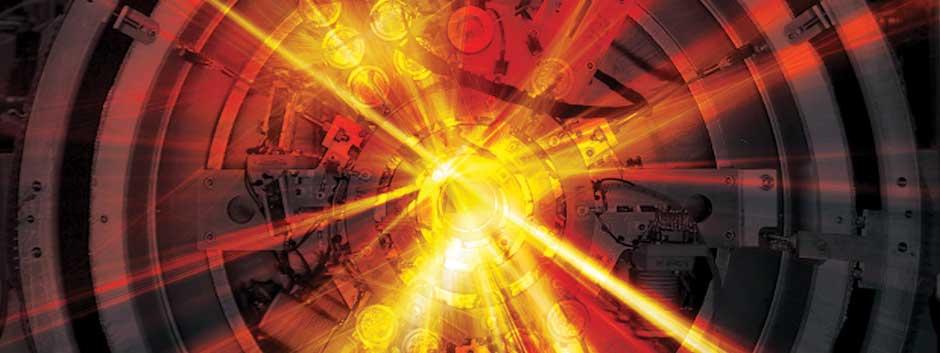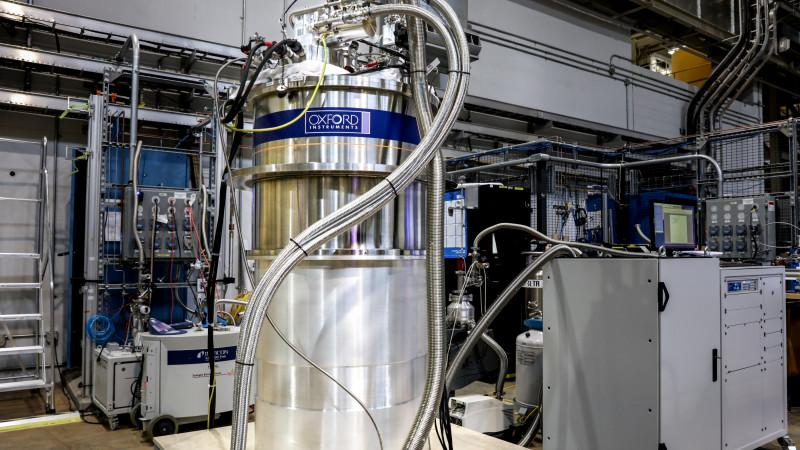Applications
 Part of the Oxford Instruments Group
Part of the Oxford Instruments Group
Expand
Collapse
In addition to continually developing our range of Cryofree® research products, Oxford Instruments’ unique depth of technical expertise and hands-on engineering experience in the design, manufacture and support of superconducting magnets and cryogenic systems enables us to create custom-engineered solutions for customers’ specific application and experimental needs.
Superconducting magnet technology has remained at the heart of Oxford Instruments throughout our history since being the company’s founding technology in 1959. As much as we are proud of this heritage, we do not rely upon it and we continue to bring our wealth of experience to every new opportunity and challenge. Our superconducting magnet systems provide our customers with their own world-leading capabilities across many applications in both physical and life sciences, applying our depth and breadth of magnet know-how from relatively simple solenoid magnet to complex split pairs and high stored energy magnet systems.
As would be expected, our technologies encompass both Cryofree® and “wet” liquid helium-cooled magnets, applying the cooling solution as appropriate to the customer, the application, and the magnet design requirements. With our specialist teams, customers can work through the trade-offs in technology and budget to develop their system requirements into a realisable specification and design.
Neutron scattering sample environments typically utilise our advanced coil geometry, split pair superconducting magnet systems with helium-recondensing, Cryofree®, or conventionally helium-cooled cryostats according to the beamline facility requirement and the most appropriate technology. These range from large-angle diffraction vertical field to small-angle (SANS) horizontal field systems, and typically include both a variable temperature insert (VTI) and a lower-temperature secondary insert (dilution refrigerator or 3He insert). Key magnet technologies in split pair design and manufacturing enable active shielding on high field, wide angle split pair systems to reduce magnetic footprint, and asymmetric and dual mode (selectable symmetric/asymmetric) magnet design for inclusion of polarised neutron experiments.


With continued needs for very high magnetic fields in scientific research across many applications, the combination of high temperature superconductor (HTS) coils with the “conventional” low temperature superconductor (LTS) NbTi and Nb3Sn conductor coils continues apace as a route to all-superconducting magnets which break the limits of LTS-alone magnets and offer alternatives to high power consumption resistive magnets. Our magnet technologies have made several key developments which enable high field and wide magnet bore combinations with high stored energy up to several MJ, with reliability of operation and safe, repeatable quench management. Typical examples include 12 Tesla/320 mm, 15 Tesla/250 mm, and 19 Tesla/150 mm field/bore combinations.
Free-space X-ray experimental applications benefit from the same technologies as our neutron scattering systems with split pair magnet systems accommodating a wide range of scattering angles. Further, ultra-high vacuum (UHV) designs together with fast-ramping and multi-axis magnets can be implemented for fast field reversal experiments such as XMCD. In such cases the sample is cooled by a variable temperature cold-finger in the UHV space, taking its cooling from the main system liquid helium volume.


Particularly in the axion search areas of dark matter research where the field-volume product (B2.V) is a key driver of detector cavity Q factor, high field and wide magnet bore combinations as driven by the chosen experimental strategy can be designed and combined with a high-cooling-power dilution refrigerator up to 1000 µW at 100 mK, utilising conventional liquid helium or Cryofree® cooling.
We recognise that not all experiments can be accommodated in a standard configuration. For these situations we are able to offer the highest field commercially available compact magnet systems, up to 20 T at 4.2K, systems requiring large experimental space – for example 18 Tesla/150 mm magnet bore to enable a rotatable SPM head, and high field / large-bore 2- and 3-axis vector rotate magnets – for example, 12/3/1 Tesla/77 mm bore or 3-axis optical access 3/3/3 T. As always, these can be combined with a range of low and ultra-low temperature inserts.


Whether for advanced materials development (for example, turbine blades) or for exotic studies of liquid helium or other matter, several high field magnet applications use the combination of magnetic field and a deliberately design field gradient in order to generate a high field-gradient product, B.dB/∂z, measured in T2/m and thus a Lorenz force on diamagnetic or paramagnetic materials. Depending on its magnitude, the Lorenz force created by the high field-gradient product can levitate materials, overcoming gravitational force, or can damp circulation of molten materials.

A number of applications across solid-state nuclear magnetic resonance (SS-NMR), electron paramagnetic resonance (EPR) and electron spin resonance (ESR) typically utilise superconducting magnets with high magnetic field homogeneity and high persistence (low drift rate). EPR/ESR systems can include an additional sweep coil for “fine tuning” at the resonant field, while active shielding can reduce the magnetic field footprint in the lab. Systems may have an ambient (room temperature) bore or an integrated variable temperature insert (VTI), or indeed a dilution refrigerator such as the Kelvinox®TLM top-loading insert with its non-metallic mixing chamber.
App Note: On the way to a graphene spin field effect transistor
How Prof. Barbaros Özyilmaz is using a TeslatronPT at the Department of Physics, NanoCore and Graphene Research Centre, National University of Singapore (NUS)
Download App NoteArticle: Powerful new magnet provides fresh insight into “frozen” quantum materials
Researchers at the Department of Energy’s Oak Ridge National Laboratory have finished the preliminary commissioning of a new 14-tesla magnet at the Spallation Neutron Source.
Find out more